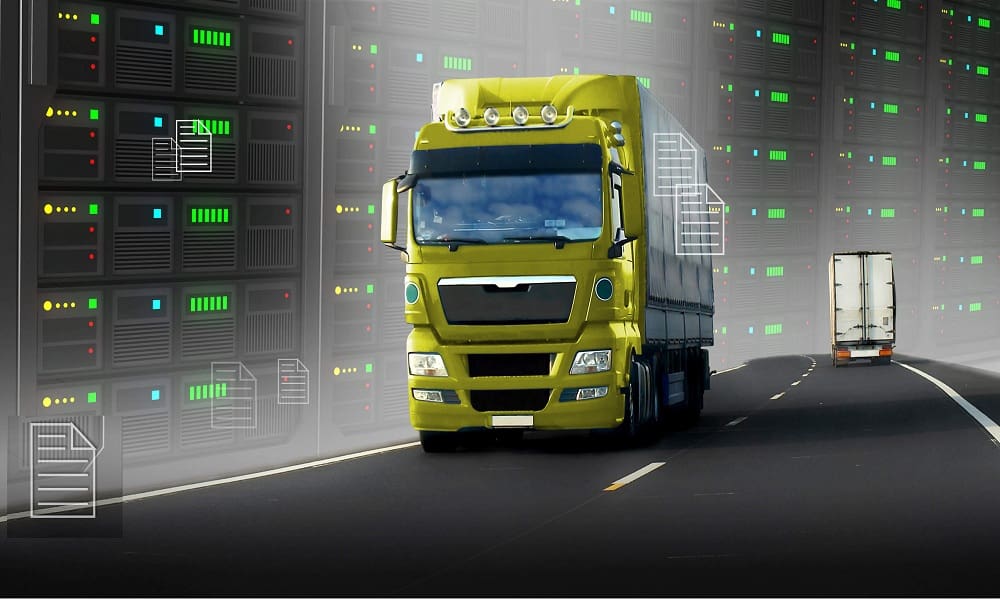Internet of Things, IoT Services & Solutions in New Zealand- OptiTrac
What Is The Industrial Internet Of Things?| A Complete Guide
The phrase “the Industrial Internet of Things” is very commonly used in the industry context. As digital transformation is becoming the top-most priority for many organizations, the industrial IoT (IIoT) is becoming quite popular.
But, what does the industrial internet of things even mean? The industrial internet of things (IIoT) refers to the extensive use of smart sensors and actuators that enhance manufacturing and industrial processes. It combines critical assets, prescriptive analysis, and advanced predictive analysis with modern industrial workers.
IIoT has transformed the way industrial companies function from day to day. It combines industrial data analytics with machine-to-machine communication to drive exceptional levels of efficiency, performance, and productivity.
As a result, several industry verticals, such as oil and gas, manufacturing, power generation, utilities, aviation, and so on, are experiencing financial miracles. Let’s find out more about what is IIoT.
What is IIoT?
IIoT, or the industrial internet of things, is synonymous with Industry 4.0. Similar to the Internet of Things in general, IIoT covers several use cases, industrial and manufacturing processes, but in the context of industries.
IIoT leverages the power of smart machines and real-time analytics to use the data that “outdated” machines have generated in industrial settings for years. IIoT opens up many avenues in optimization, automation, asset performance management, intelligent manufacturing and smart industry, industrial control, management, etc.
Overall, these create new opportunities for the convergence of IT and OT, nuanced ways of serving customers, the creation of revenue models, the industrial goal of digital transformation, and so on.
The motivating philosophy behind IIoT is that smart machines are better than humans at collecting and analyzing data in real-time and communicating information that can be leveraged to make informed and accurate business decisions.
In IIoT systems, connected actuators and sensors can help companies identify inefficiencies, solve problems faster, and save resources. This also supports business intelligence efforts. Especially in the production and manufacturing industry, IIoT has immense potential.
It can help in quality control and management, supply chain traceability, efficiency, and sustainable and green processes. It is also key to energy management, asset tracking, and predictive maintenance.
The evolution of IIoT
To understand the evolution of IIoT, we need to know who coined the term “industrial internet”. Industrial giant GE coined it in late 2012, and since then, GE has been driving its digital industrial transformation by harnessing the promise of the Industrial Internet.
GE described the industrial internet as an industrial transformation in the interlinked context of advanced analytics, AI, machines, people, cloud, IoT edge computing, etc.
However, the birth of the industrial internet happened way before that. The path to creating IIoT was first initiated in 1968 when Dick Morley made one of the most significant breakthroughs in manufacturing history.
That year, Morley and his team had invented the programmable logic controller (PLC), which would ultimately become irreplaceable in automating industrial robots and assembly lines in manufacturing factories.
Besides Dick Morley’s contribution, other significant breakthroughs were instrumental in making the industrial internet of things possible. These were:
- 1983: The Ethernet was standardized
- 1989: Tim Berners-Lee created the groundbreaking Hypertext Transfer Protocol (HTTP)
- 1992: TCP/IP allowed PLCs to harness connectivity
- 2002: Amazon Web Services was launched, and cloud computing started to gain ground
- 2006: OPC Unified Architecture (UA) enabled secure communications that would take place between devices, data sources, and applications. At the same time, devices started becoming more compact as batteries and solar energy became economical.
- 2010: The price of sensors dramatically reduced; this enabled the growth of IoT.
After all these developments, today, the IIoT has become extremely significant. It is majorly transforming how most industries operate and adding a new layer of technology meant to help companies optimize their operations. The IIoT helps manufacturing companies make sense of real-time data and make informed business decisions like never before.
In a large industrial context, customers expect enhanced processes and speed, which is exactly what the IIoT promises to revolutionize.
How Does IIoT Work?
The IIoT is an interconnected network of intelligent devices associated with forming systems that will collect, monitor, and analyze data. Therefore, each industrial IoT network typically consists of the following:
- Connected devices that can sense, store, exchange, and communicate data about themselves
- A public or private data communications infrastructure
- Applications and analytics that will generate business information by processing raw data.
- Storage space for the data generated by these IIoT devices
In IIoT systems, edge devices and intelligent assets exchange information to the data communications infrastructure through a direct channel. Then, it is converted to actionable information on how a machine is working. This information is generally used for optimizing business processes and predictive maintenance.
Benefits Of The IIoT
As we discussed earlier, the IIoT has radically transformed how industries operate. That means it offers several benefits such as:
- Enhancing productivity in industries
- Decreasing downtime
- Improving functional efficiency of manufacturing processes
- Creating greater avenues of business opportunities
- Maximizing asset utilization
Is The Industrial Internet Of Things (IIoT) The Future Of Manufacturing?
With the help of Industry 4.0 and the industrial internet of things, industries continue to revolutionize their processes. In this case, the manufacturing industry is at the top, and traditional manufacturers are expected to become connected by leveraging IIoT processes.
For industries, IoT Services can help them unlock the hidden potential of machine data. Insights from this machine data are not only valuable, but it offers many benefits, including increasing employee safety, maximizing asset utilization, reducing operating costs, improving operational productivity and efficiency, and decreasing downtime.
The Bottom Line
In conclusion, the IIoT is not only the future of manufacturing but crucial if industries want to stay relevant in the face of digital disruption. The companies that don’t drive their business forward using IIoT will be left behind.
IIoT can help you break through the business outcomes and generate more remarkable revenue streams regardless of where you are in your digital transformation journey.
It won’t be long before IIoT becomes ubiquitous!
Similar Posts

5 Top IoT Tools To Check Out In 2022
The experts predict that the number of active IoT devices will exceed 25.4 billion in 2030. It is......

What Is Project Management Software And What Does It Do?
If you are a budding entrepreneur or a project manager, the right project management software will change your......

What Is Fleet Management System And Its 3 Benefits
During heavy rains in London, Company XYZ fell behind their deliveries, costing the firm a lot of money.......
